Used Subaru Outback Quick Facts
- The best years for a used Subaru Outback are 2022-2025, followed by 2017-2019, and for an older model, 2005-2009.
- Since 2010, the Insurance Institute for Highway Safety (IIHS) has named every Subaru Outback to its Top Safety Pick or Top Safety Pick+ lists.
- The Outback consistently retains better-than-average resale value and customer loyalty.
The Subaru Outback is legendary among Subaru loyalists, but it is also quite well regarded by those living in states frequented by snow. With its standard Symmetrical All-Wheel Drive (AWD), lofty ground clearance, and additional body cladding, the Subaru Outback treads very much on terrain usually reserved for big SUVs. We’ve chosen to follow Subaru’s lead and call it an SUV. However, some will argue with that. To its credit, the Outback’s wagon body makes it feel less truck-like, and for many people, that’s a positive.
- What Is the Best Model-Year Used Subaru Outback?
- Subaru Outback by Generation: Which Should You Buy?
- Is the Subaru Outback Reliable?
- Can You Go Off-Roading in a Subaru Outback?
- Does the Subaru Outback Have a Hybrid Option?
- How Much Can the Subaru Outback Tow?
- What Are the Most Reliable Years for the Subaru Outback?
- What Are the Worst Years for the Subaru Outback?
What Is the Best Model-Year Used Subaru Outback?
Except for the 2020 model, the current Outback generation has garnered plenty of goodwill among its owners. Within recent memory, the 2017 and 2018 models have been solid, too. Going back even farther, a well-maintained 2005 and 2009 Outback makes a fine used car.
Subaru Outback by Generation: Which Should You Buy?
Here’s a rundown of the Subaru Outback by generation so you can pick the one that’s right for you.
Sixth Generation: 2020-Current
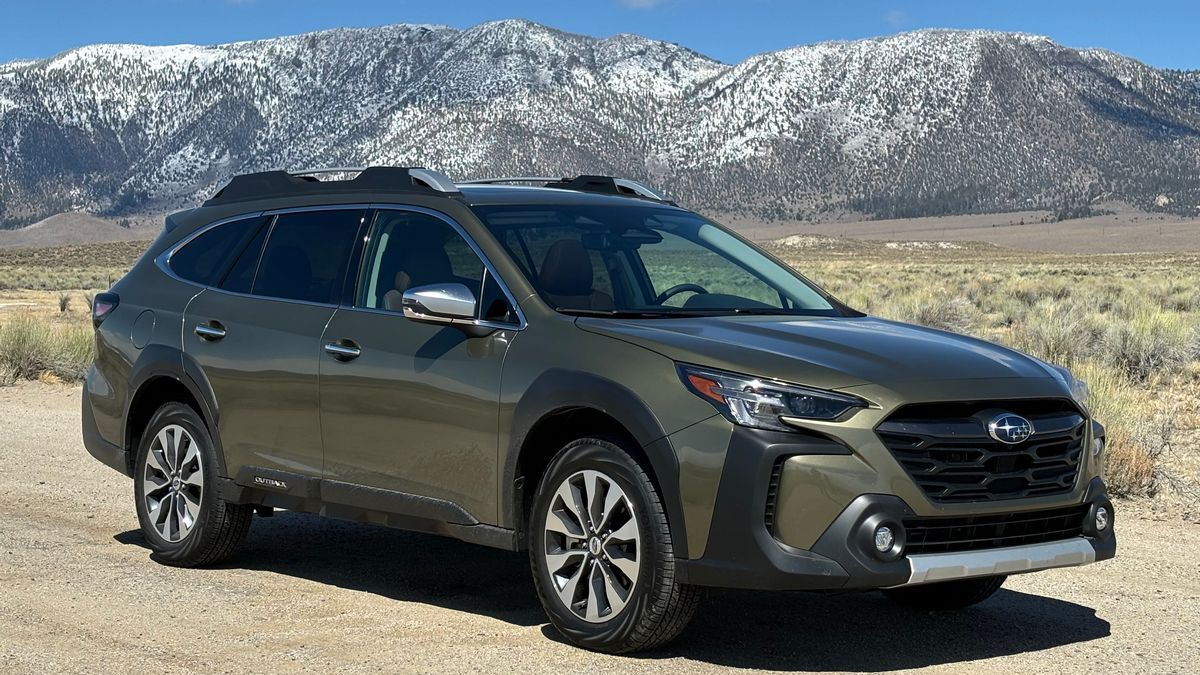
All-new for the 2020 model year, the sixth-generation Outback improves over the fifth generation without straying too far from the wagon/SUV formula. It retains the same basic look but has a few subtle tweaks, giving it a more aggressive look. Move to the cabin, however, and there’s a world of difference. The sixth-gen Outback has a decidedly more upscale interior than its predecessors without sacrificing space for cargo and passengers.
Under the hood, the standard engine is a naturally aspirated 2.5-liter flat 4-cylinder pumping out 182 hp. The previous generation’s 6-cylinder engine is replaced by a 260-hp turbocharged flat-4, which delivers performance similar to the old engine but with improved fuel economy. Regardless of engine, a continuously variable automatic transmission (CVT) comes standard, as does Subaru’s Symmetrical All-Wheel Drive and traction-enhancing X-Mode.
There are numerous Outback trims to choose from, including Base, Premium, Onyx, Touring, and Wilderness. The turbocharged engine is available in the Limited and Touring, and it is standard in the Onyx and Wilderness.
Even the base Outback comes nicely equipped. It includes the EyeSight suite of driver assistant features, such as forward collision warning and braking, adaptive cruise control, and lane-centering. It also features automatic climate control, LED headlights, 17-inch alloy wheels, and dual 7-inch touchscreens that operate the infotainment system, climate controls, Apple CarPlay, and Android Auto.
The Premium trim offers additional equipment, including an 11.6-inch infotainment and climate control touchscreen, a 10-way power driver’s seat with power lumbar support, dual-zone climate control, heated front seats, heated side mirrors, and heated wiper de-icers. Optional equipment includes a power liftgate, a blind-spot monitor with rear cross-traffic alert, navigation, and a power moonroof.
The Limited adds leather upholstery, a power passenger seat, heated rear seats, a Harman Kardon audio system, reverse automatic braking, a memory driver’s seat, and adaptive headlights.
The Touring brings Nappa leather, a heated steering wheel, ventilated front seats, and a driver attention monitor.
The Onyx features a turbocharged engine, water-repellent upholstery, a forward-facing camera, Dual-mode X-Mode, a full-size spare tire, hill descent control, and distinctive exterior and interior styling.
Although we don’t consider the Subaru Outback a hardcore off-roader, the Wilderness grade is more capable than its Outback stablemates in conquering slush and mud. For example, ground clearance is higher; the Wilderness rises to 9.5 inches, compared to the other Outback trims’ 8.7 inches. A more aggressive front bumper, a front skid plate, and Dual-mode X-mode, which includes hill-descent control and enhances all-wheel-drive traction on slippery surfaces like snow, gravel, and dirt, are standard. It gets some extra body cladding, too. In other words, the Outback Wilderness is better prepared to tackle the moderate levels of off-roading encountered by the majority of drivers.
For this generation, some common issues include failure and glitches with the 11.6-inch touchscreen, parasitic battery drain, cracked windshields, and fuel economy not meeting expectations with the turbocharged engine. The 2020 model year is particularly egregious, with six recalls for things like loose or missing brake pedal bolts, airbags that may fail to deploy, drivetrain failure due to a faulty Transmission Control Unit, and failure of the rearview camera.
Model-Year Changes:
2025: The Limited gains a heated steering wheel, power moonroof, and driver attention monitor.
2024: The Wilderness gains a few styling enhancements.
2023: Subaru improves the EyeSight system and adds wireless Apple CarPlay/Android Auto to the 11.6-inch touchscreen.
2022: The Wilderness trim debuts while the Premium gets rear seat air vents. LED fog lights are now standard equipment.
2021: New features include active LED headlights and a rear seat reminder.
See 2020 to current Subaru Outback SUVs near you.
Fifth Generation: 2015-2019
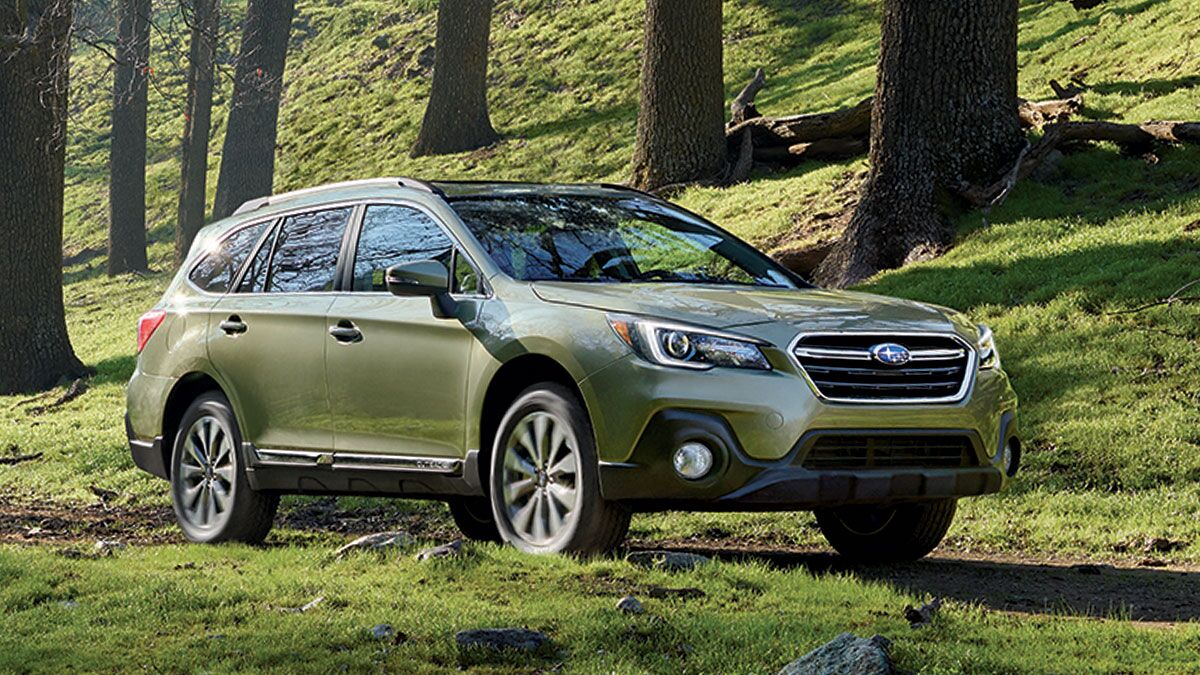
With the fifth-generation Outback, Subaru focused on polishing the rough edges found on the fourth-generation car. The engines are slightly more powerful and smoother, and a continuously variable automatic transmission (CVT) is now standard with both the 3.6-liter and 2.5-liter engines. Sadly, the manual transmission option does not make the team. The interior is vastly more sophisticated, with better materials, seats, and fabrics. The ride is smoother, interior sound levels are lower, and the EyeSight system is vastly improved.
Issues with the infotainment system, a sore point for Subaru, are finally addressed, with the 2018 models gaining Apple CarPlay and Android Auto.
A simple trim lineup includes Base, Premium, Limited, and Touring. The base model isn’t as well-equipped as the next generation, offering just the basics. To get features like a larger touchscreen infotainment system, EyeSight, and the All-Weather Package, you have to move up to the Premium trim, and even here, things like EyeSight are optional. The Limited brings more luxury, standard EyeSight, and upscale features like leather seating, Harman Kardon audio, heated rear seats, and a blind-spot monitor with rear cross-traffic detection. The Touring trim arrives late in the model run, bringing Java Brown leather upholstery, a heated steering wheel, and low-profile roof rails that eliminate the swinging crossbars.
For this generation, problems include sluggish or jerky CVT performance, creaking rear suspension trailing arms, issues with the Starlink infotainment system not working with older iPod models, batteries that fail to hold a charge, and some annoying squeaks and rattles inside the cabin after a few years of use. Another issue to consider on any Outback with the EyeSight system is the cost of replacing the windshield. Due to the placement of the EyeSight cameras behind the windshield, the cost of replacing the glass and recalibrating the cameras can be higher than that of a standard windshield replacement. However, that may be a common issue with many vehicles these days.
Model-Year Changes:
2019: New standard equipment includes the EyeSight system.
2018: A new infotainment system now includes Apple CarPlay and Android Auto. The Outback gets a modest refresh, with new front-end styling and new options like steering-responsive LED headlights.
2017: The Touring trim joins the lineup, and new options include reverse auto braking and automatic high beams.
2016: No significant changes.
See 2015-2019 Subaru Outback SUVs near you.
Fourth Generation: 2010-2014
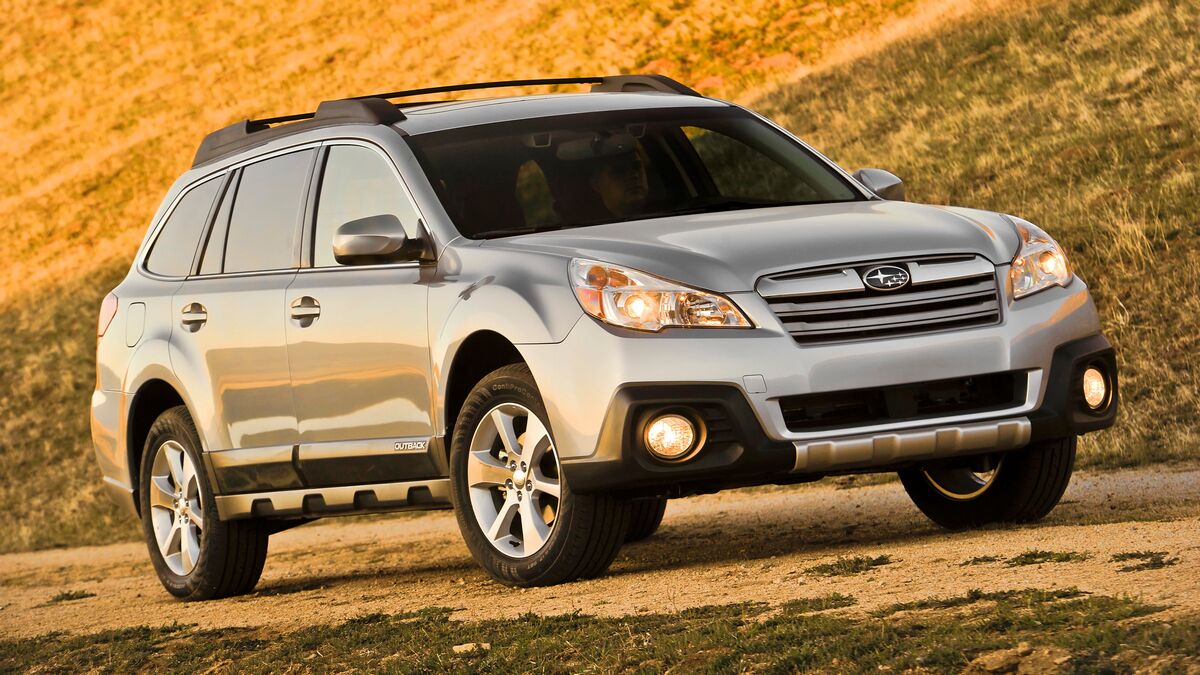
The introduction of the 2010 Outback marks the most radical change in the wagon’s history. It grows in height and width, but ironically ends up one inch shorter than the 2009 model it replaces. The look is far more aggressive and even a bit polarizing compared to the sleek and tasteful two-tone-colored models of the previous generation. The 2010 model marks Outback’s first appearance on the Insurance Institute for Highway Safety’s (IIHS) Top Safety Pick list, but not its last.
Subaru drops the turbo-4, replacing it with an all-new 3.6-liter engine mated to a 5-speed automatic transmission. The 2.5-liter models get paired with a CVT automatic, a first for the Outback and one that significantly improves fuel economy. A 6-speed manual is available, but only on the 4-cylinder Base and Premium trims. The biggest improvement for 2010 is the Outback’s cabin, where rear legroom goes from cramped to copious, with only a slight reduction to rear cargo space. Major milestones for this generation include a set of unique roof rack fold-away crossbars, the introduction of the EyeSight collision avoidance system in 2013, and the use of framed door glass, which improves both interior noise levels and weatherproofing.
CVT models initially experienced a few reliability issues, and the head gasket failure issue persisted in some early cars. Some 2010-2012 models experienced odd wheel vibration at high speeds, while the 2013 model had a problem with excessive oil consumption due to defective piston rings. Subaru had to settle a class-action lawsuit by extending the warranty on the engine and reimbursing owners for any expenses related to the flaw.
Model-Year Changes:
2014: The Premium trim gains the All-Weather Package as standard equipment.
2013: The Outback undergoes a major update, with a styling update, improved suspension, and an improved 2.5-liter engine with a timing chain in place of the previous rubber belt.
2012: No significant changes.
2011: Newly available equipment includes a rear backup camera, satellite radio, and a Wi-Fi hotspot.
See 2010-2014 Subaru Outback SUVs near you.
The Early Years (1995-2009): Generations 1-3
2005-2009
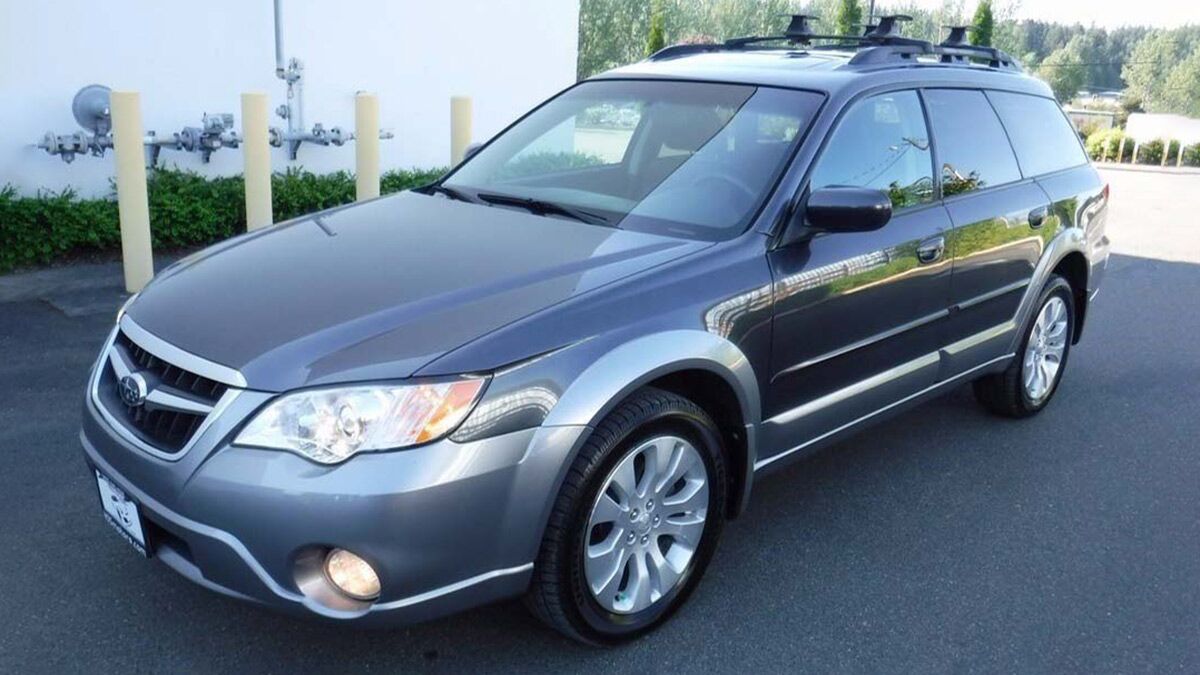
The third-generation Subaru Outback ushers in an entirely new platform, again up in size and weight, but with roughly the same interior volume as the previous generation. The sometimes problematic frameless windows remain, but the rest of the 2005 Outback sees a significant update to its looks, with a sleeker front end, more aggressive wheels, and a more luxurious interior. This is also the generation that debuts the turbocharged XT trim. The 2.5-liter turbocharged engine, rated at 250 horsepower, in the XT offers a choice of a 5-speed manual or a 5-speed automatic. Output from the turbo matches that of the 6-cylinder, but with more low-end torque.
The 2.5-liter 4-cylinder models see horsepower rise to 175 and also offer a choice of manual or automatic transmissions. During this time, Subaru expands the Outback’s feature set to include a power passenger seat, navigation, and a Harman Kardon audio upgrade. In 2008, Subaru drops the Outback sedan, leaving only the wagon. Also gone was the popular L.L. Bean Edition. Head gasket issues remain for both the 4- and 6-cylinder cars, and Consumer Reports noted multiple issues with the turbocharged engine relating to engine cooling and transmission issues.
See 2005-2009 Subaru Outback SUVs near you.
2000-2004
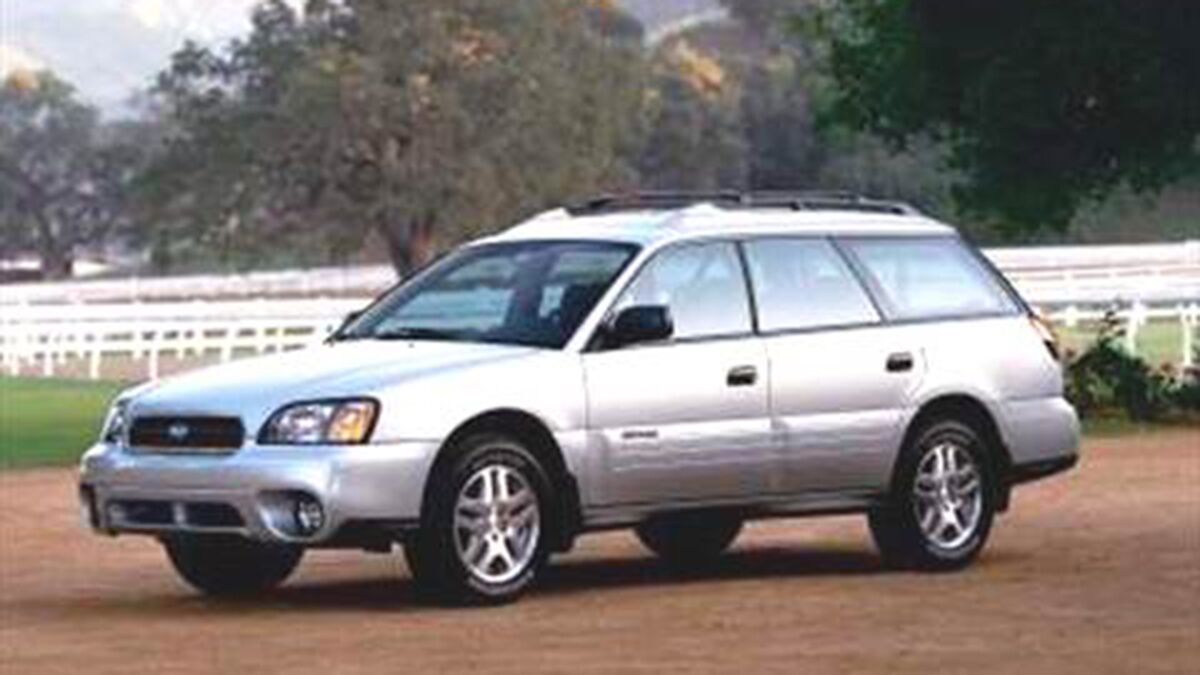
In 2000, the Outback becomes a full-fledged model, gaining the now-familiar tall ride height, protective body cladding, and SUV-like attitude. During this time, Subaru also creates a sedan version of the Outback, retaining much of the wagon’s looks and features but with a trunk instead of an open cargo bay. Over its 5-year model run, the second-generation Outback gains more high-end features, like a power driver’s seat, a dual-panel sunroof, and heated seats, as well as a more powerful 3.0-liter 6-cylinder engine that bumped output to 210 hp.
Several specialty trims, including the L.L. Bean, VDC, and Audio, arrive during this time. Ironically, the 2000-2004 Outback has become extremely popular with the well-off in places like Boulder, Colorado, and Jackson Hole, Wyoming, achieving a cult-like status that has pushed prices higher than some newer Outback generations. Trouble spots include a history of blown head gaskets around 100,000 miles, air and water leaks around the frameless door windows, and some transmission and center differential issues on high-mileage cars.
See 2000-2004 Subaru Outback SUVs near you.
1995-1999
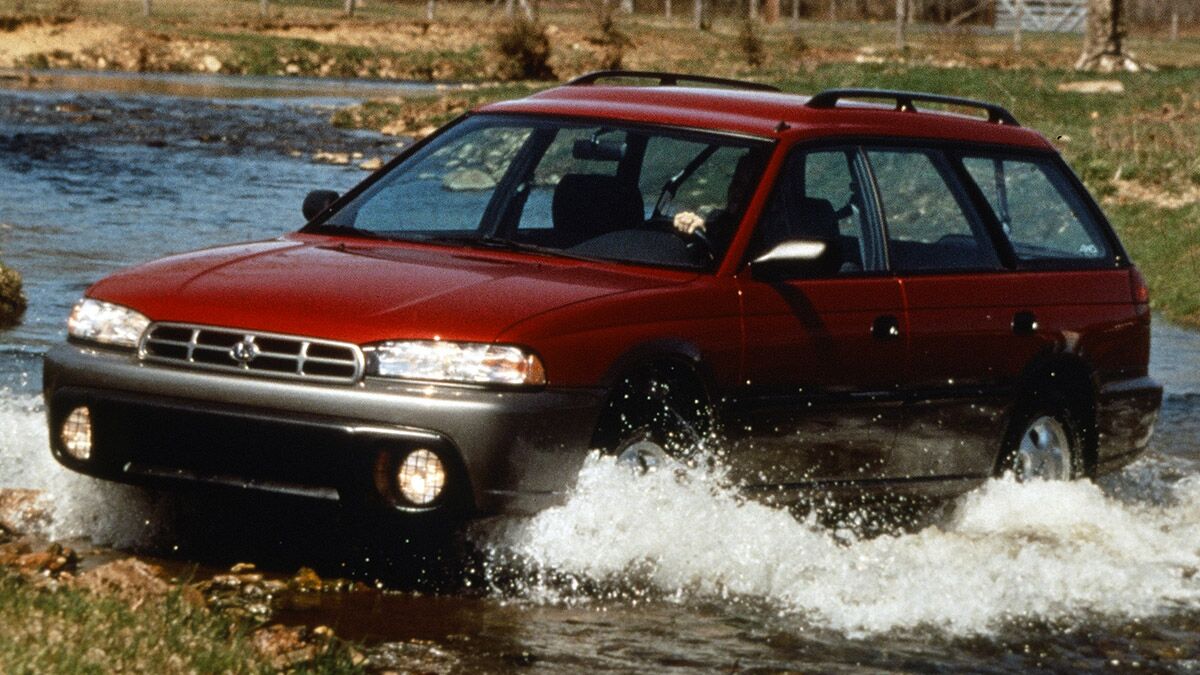
When the Outback first debuted at the 1994 New York Auto Show, it looked like a gussied-up Legacy L wagon upon which it was based. There was no additional cladding, no elevated ride height, just a two-tone paint job, an upgraded interior, and Outback badges.
First-gen Outbacks have a 5-speed manual as standard and split power 50/50 between the front and rear wheels. The optional 4-speed automatic uses an electronic system that favors the front wheels for better fuel economy. In 1997, Subaru introduced a Limited trim, which brought leather seats, fancier wheels, and more upscale options. In 1999, a 30th Anniversary model was offered, but changes to the Outback remained minimal.
Is the Subaru Outback Reliable?
With the exception of the few well-documented issues, the Outback makes a good used car choice and is reliable in the long run, especially if you keep up with routine maintenance. Older models should be checked for head gasket and CVT health. You’ll also want to check the list of recalls and warranty extensions offered by Subaru, such as the 2010-2015 CVT warranty, which was extended to 10 years/100,000 miles.
The first-generation Subaru Outback models will likely have high mileage with significant interior wear and, more than likely, new or rebuilt engines. You’d be better off starting with second- or third-generation models, which, as we said, have gained a bit of a cult following. These Outback wagons have the ground clearance one needs to get through deep snow, offer the option of a more powerful 6-cylinder engine, and are generally nicely equipped.
For those wanting to upgrade their car with modern conveniences like Bluetooth and Apple CarPlay, it should be noted that the 2005-2009 models have the HVAC and audio controls integrated into a single faceplate. This makes upgrading to a newer audio system rather problematic, not to mention expensive. If you’re a fan of the big panoramic moonroof, these models were the last to have one.
The fourth- and fifth-generation Outback SUVs are definitely the ones to get if you need lots of rear seat room and a more versatile cargo carrier. These models are also the most comfortable, fuel-efficient, and off-road capable, but they’ll also cost a fair bit more than an older model.
Go with a model older than six years. A private-party sale may be advantageous for negotiating a better price, and the possibility that the owner kept meticulous repair and maintenance records. A car only a few years old might be better bought from a dealer that can provide a certified pre-owned vehicle, which comes with a presale inspection as well as an extended warranty.
Can You Go Off-Roading in a Subaru Outback?
Beginning with the 2000 model, the Outback seems well-suited for moderate off-roading adventures. Taking a dirt road to the lake or slogging along snow-covered roads to the ski lift is well within Outback’s capabilities. With the introduction of the Wilderness trim in 2022, Subaru upped Outback’s off-pavement game to include somewhat more challenging terrain. It’s still not a rock crawler, but it can overcome reasonable trials once the pavement runs out.
Does the Subaru Outback Have a Hybrid Option?
To date, there is no hybrid option on any Outback generation.
How Much Can the Subaru Outback Tow?
We don’t know how many Outback buyers pick this popular SUV based on its towing chops, but it can certainly tug a trailer hauling a dirt bike, personal watercraft, or ATV.
The current Outback generation has a maximum towing capacity of 3,500 pounds with the turbocharged 4-cylinder. This number drops to up to 2,700 pounds with the base engine.
From 2005 to 2019, the Outback could also pull up to 2,700 pounds with the base engine but only about 3,000 pounds with the upgraded engine, whether the upgrade was a turbo 4-cylinder or a V6.
What Are the Most Reliable Years for the Subaru Outback?
Regardless of whether they experience favorable or unfavorable reliability, most Outback owners remain steadfast in their support for this SUV and the Subaru brand. Yet, some model years have been more problematic than others for Outback owners. For newer models, those from 2021 to 2024 are relatively problem-free. Older years that seem to shine include 2017-2019 and 2005-2009.
What Are the Worst Years for the Subaru Outback?
Among newer Outback models, we’d be cautious about the 2020 vintage, with its six recalls and some issues regarding its infotainment system reliability. Also on our questionable list is the 2013 model, weighing in with 12 recalls. Owner complaints revolved around the transmission and exhaust system. Stalling and transmission failure led to complaints regarding the 2011 Outback, which also posted 16 recalls.
See Subaru Outback SUVs near you.
Editor’s Note: This article has been updated since its initial publication.











